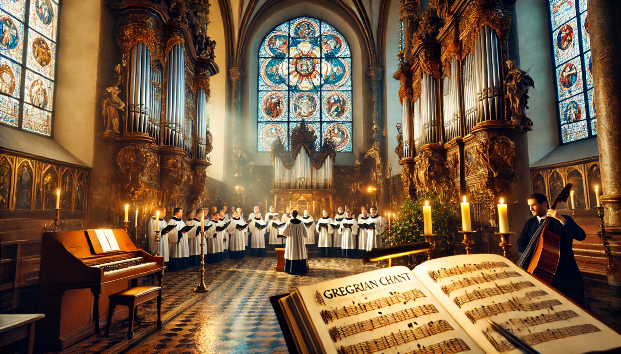The History of Sacred Music: Exploring Its Origins and Evolution

Sacred music has been an essential part of worship and religious expression for centuries, shaping the spiritual experiences of countless believers. From the early chants of ancient civilizations to the contemporary worship songs of today, sacred music has evolved while maintaining its profound purpose—glorifying God and fostering a deeper connection with the divine. In this post, we explore the origins, historical development, and lasting impact of sacred music traditions across different eras.
The Origins of Sacred Music
The roots of sacred music stretch back to the earliest human civilizations, where music played a central role in religious rituals and ceremonies. Some of the earliest records of sacred music can be traced to:
- Ancient Jewish Worship: The Book of Psalms, attributed largely to King David, is one of the most significant collections of sacred hymns. Psalms were sung with lyres, harps, and other ancient instruments in temple worship.
- Greek and Roman Influence: Greek philosophers like Plato and Aristotle recognized music’s power in shaping morality and spirituality. Romans adopted sacred music in their rituals, influencing early Christian practices.
- Early Christian Chanting: The first Christians, influenced by Jewish traditions, used simple, unaccompanied chants in their worship gatherings, forming the foundation for later sacred music styles.
The Rise of Gregorian Chant
One of the most significant developments in sacred music occurred during the early Middle Ages with the emergence of Gregorian chant, named after Pope Gregory I (590–604 AD). This form of music:
- Featured monophonic melodies (single-line singing without harmony).
- Was used in Catholic liturgies, particularly in monasteries and cathedrals.
- Established a standardized system of musical notation, allowing melodies to be preserved and passed down.
Gregorian chant became the backbone of medieval sacred music, influencing composers for centuries to come.
Sacred Music in the Renaissance and Baroque Periods
Renaissance Era (1400–1600)
During the Renaissance, sacred music evolved into polyphony, where multiple vocal lines were sung simultaneously. Composers like Giovanni Pierluigi da Palestrina refined church music, creating harmonically rich compositions that emphasized clarity of text for worship.
Key developments:
- Masses and Motets became the dominant forms of sacred music.
- Choral compositions flourished, as church choirs grew in prominence.
- Instruments began to accompany sacred music, though vocals remained central.
Baroque Era (1600–1750)
The Baroque period brought dramatic and expressive sacred compositions, incorporating orchestral arrangements and complex harmonies. Notable composers include:
- Johann Sebastian Bach, who composed sacred cantatas, oratorios, and masses.
- George Frideric Handel, whose Messiah remains one of the most famous sacred works.
- Antonio Vivaldi, known for his religious choral and instrumental compositions.
During this period, the grandeur of sacred music reflected the ornate architecture and elaborate worship services of European churches.
Sacred Music in the Classical and Romantic Periods
The Classical period (1750–1820) introduced a more structured and refined approach to sacred music. Wolfgang Amadeus Mozart’s Requiem Mass and Ludwig van Beethoven’s Missa Solemnis are among the most celebrated compositions from this era.
The Romantic period (1820–1900) saw composers infuse more emotion into sacred music, with grand choral and orchestral works that aimed to evoke deep spiritual experiences. Franz Schubert, Johannes Brahms, and Giuseppe Verdi composed powerful sacred masses and requiems.
Sacred Music in the Modern Era
Sacred music has continued to evolve in the 20th and 21st centuries, adapting to new styles and technologies:
- Gospel music emerged in African-American churches, blending sacred themes with rhythm and blues influences.
- Contemporary Christian Music (CCM) introduced worship songs with modern instrumentation, making sacred music more accessible to younger audiences.
- Sacred choral and orchestral compositions remain popular, with modern composers incorporating electronic elements and world music influences.
- Digital streaming and worship technology have allowed sacred music to reach global audiences instantly.
Despite the transformations in musical styles, the essence of sacred music remains unchanged: it continues to uplift, inspire, and connect people with the divine.
Conclusion
From ancient psalms to contemporary worship songs, sacred music has played a pivotal role in shaping religious and spiritual traditions. Its evolution over time reflects humanity’s ongoing desire to worship, praise, and seek divine connection through music. Whether in grand cathedrals, quiet chapels, or modern worship gatherings, sacred music remains a timeless and transformative force in the Christian journey.



Comments
This post currently has no comments.